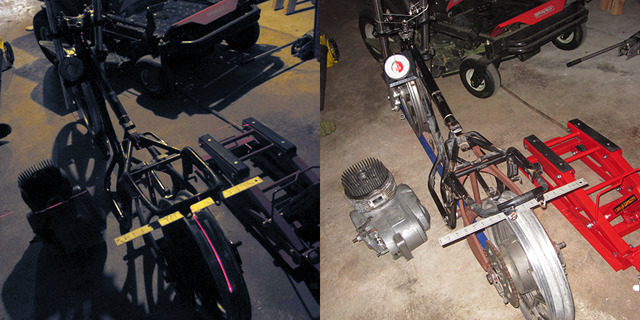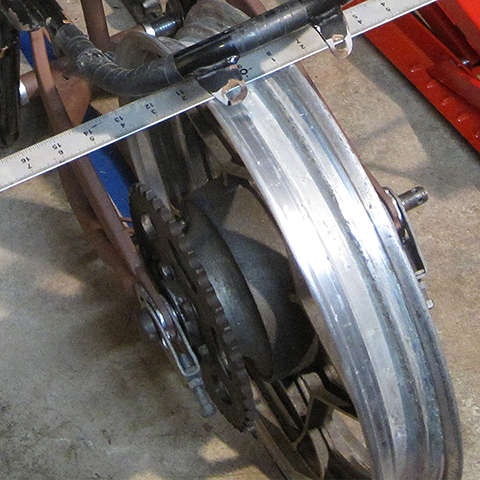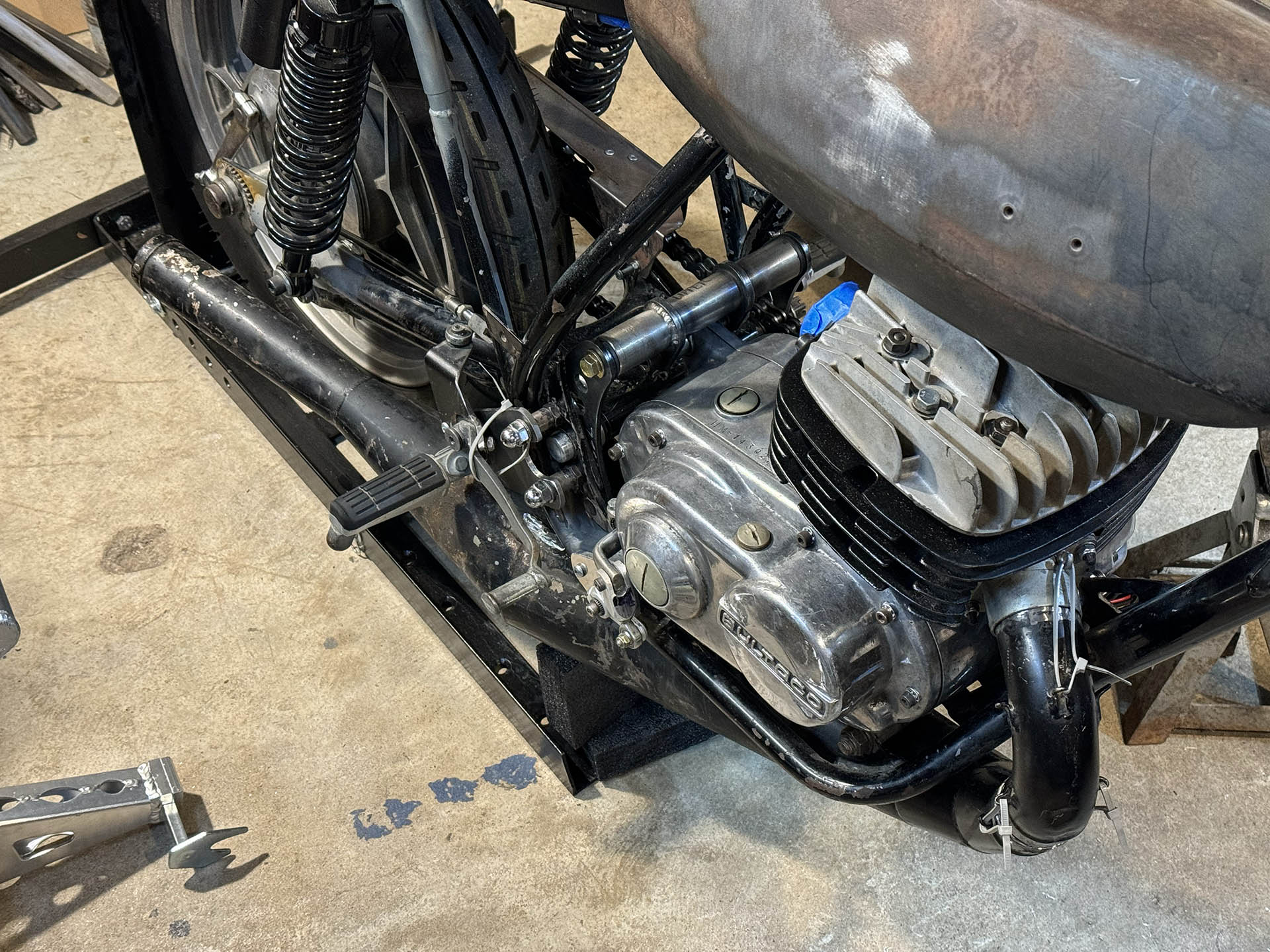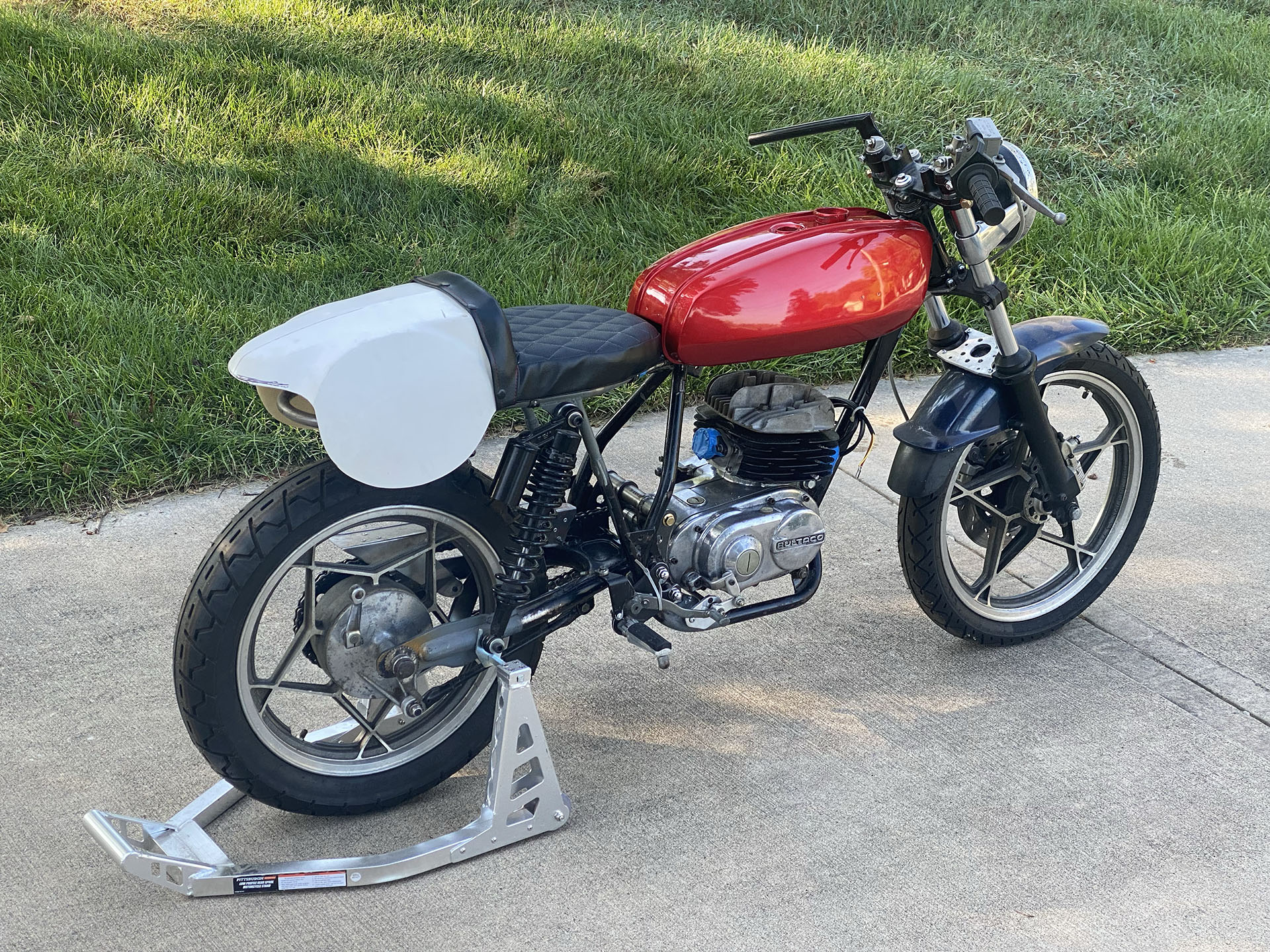I had both of the stock GS450T axle spacers, so once I had aligned everything the best I could using a laser and steel rulers and carpenter’s squares and plumb bobs, I scribed a line around the circumference of the left rear wheel spacer, marking the point at which I needed to cut it to get the proper width. Then I took the “measure twice, cut once” maxim literally. I pulled the bike off my chalk/tape line, re-aligned my laser, and put the bike back in position rotated 180 degrees. I figured this might compensate for the rather casual production tolerances of Bultaco’s frames, my crude measurement equipment, plus any irregularities in my concrete garage floor.
I lined everything back up and scribed the wheel spacer again: it was 1.5mm further out (thicker) than my first scribe mark, so I went with that one (simply since it’s much easier to file away metal than to add it!). I carefully cut the spacer with a hack saw, filed the face square, and assembled everything. The spacer on the brake side of the wheel was nearly correct; I just needed to swap the washer under the axle nut to the inside of the swingarm, and it was perfect.

I lined everything up a third time and measured again. As far as I can tell, my rear wheel is within 1 mm of center, which is so close that I can’t believe it would be detectable to rider. Tire irregularities and uneven wear, chain adjuster alignment and fork/frame/swingarm deflection can easily have an equal impact on front-rear wheel relationship. I bet my bike is as closely aligned as a stock Bultaco. Heck, I recall reading that a lot of early Kawasaki Z1s had the rear wheel off-center as much as 1/4″ to 3/8″ from the factory. Granted, not the most wonderful handling bike to use as an example, but…

This photo shows how little clearance there is between the swingarm and the sprocket carrier. Shifting the swingarm any further to the right would have cost me some rework!


